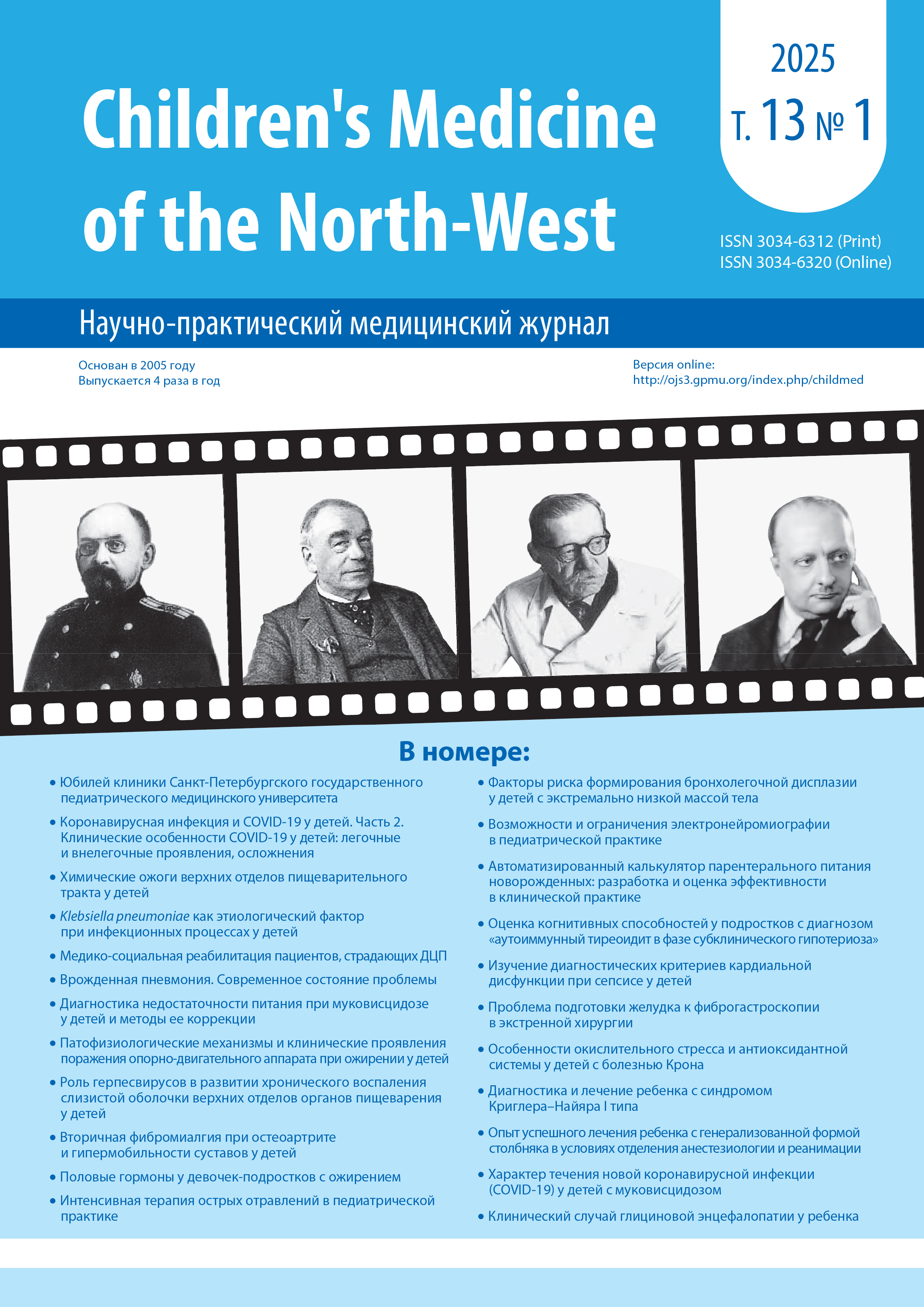CLINICAL CASE OF GLYCINE ENCEPHALOPATHY IN A CHILD
Abstract
Glycine encephalopathy (non-ketotic hyperglycinemia) is a rare genetic metabolic disease inherited by an autosomal recessive type, characterized by disorders in the multifermental complex of glycine breakdown, which leads to excessive glycine accumulation in all body environments, including in the and brain. Glycine accumulation leads to irreversible damage to the nervous system and a high risk of mortality in the first year of life. Symptoms of the disease, as a rule, begin to appear in the first days of life: lethargy increases, muscle hypotension progresses, convulsions, episodes of apnea, depression of consciousness up to a deep coma may occur. To make a diagnosis of glycine encephalopathy, 4-level testing is shown, which allows you to accurately differentiate this pathology and start therapy on time, in the absence of which the further prognosis worsens. There are several forms of this pathology by time of occurrence. Complications of the disease can have serious consequences for the patient and require timely diagnosis and treatment. There is no effective etiotropic treatment for this disease, the outcome depends on the clinical option. This article provides a brief overview of this rare pathology and describes the clinical follow-up of a child diagnosed with this disease. The clinical case shows how important it is to provide timely palliative care to children with glycine encephalopathy. Also, the presented case demonstrates the complexity of the diagnostic search due to the non-specificity of the clinical manifestations of metabolic disorders, similar to other diseases accompanied by damage to the nervous system.
References
Mabry C.C., Karam F.A. Idiopathic hyperglycinemia and hyperglycinuria. Sth. Med. J. 1963;56:1444.
Balfe J.W. et al. Hyperglycinemia and glycinuria in a newborn. Canad Med Assoc J. 1965;92:347.
Gerritsen T., Kaveggia E., Waisman H.A. A new type of idiopathic hyperglycinemia with hypo-oxaluria. Pediatrics. 1965;36(6):882–891.
Hayasaka K. et al. Nonketotic Hyperglycinemia: Two Patients with Primary Defects of P-Protein and T-Protein, Respectively, in the Glycine Cleavage System. Pediatr Res. 1983;17(12):967–970.
Coughlin C.R. et al. The genetic basis of classic nonketotic hyperglycinemia due to mutations in GLDC and AMT. Genet Med. 2017;19(1):104–111.
Некетотическая гиперглицинемия — причины, симптомы, диагностика и лечение. Доступно по: https://www.krasotaimedicina.ru/diseases/genetic/nonketotic-hyperglycinemia (дата обращения: 07.02.2025).
Li H.F. Clinical and molecular genetic characteristics of nonketotic hyperglycinemia. Zhongguo Dang Dai Er Ke Za Zhi. 2017;19(3):272–274. Chinese. DOI: 10.7499/j.issn.1008-8830.2017.03.004.
Габитова Н.Х., Черезова И.Н., Валеева Н.Р. Редкое метаболическое заболевание — некетотическая глициновая энцефалопатия у новорожденного ребенка. РМЖ. 2023;3:45–48.
Студеникин В.М. Представления о некетотической гиперглицинемии в XXI веке. Лечащий Врач. 2022;9(25):44–48. DOI: 10.51793/OS.2022.25.9.008.
Иванова (Цацулина) О.А. Глициновая энцефалопатия. Генокарта. Генетическая энциклопедия. 2020. URL: https://www.genokarta.ru/disease/Glicinovaya_encefalopatiya.



